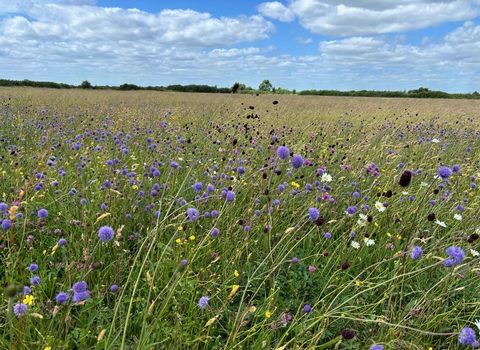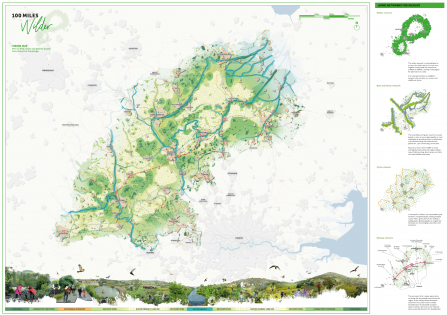The area between Oxford and Cambridge has been identified by the Government as a key area for delivering growth, innovation and a significant chunk of the 1.5 million homes they want to build in the next 5 years. If the Oxford to Cambridge Growth Corridor is going to be more than simply deregulation to boost building, the Government needs to subscribe to a new way of thinking.
The current planning system does not address the needs of society when dealing with development on such a large scale. Today's nature and climate emergency require different thinking when it comes to planning and placemaking. We want to see a strategic plan for the whole of the Oxford to Cambridge Growth Corridor instead of the current piecemeal approach. Managing water stress, transport pressures, housing requirements, climate obligations, and the need for nature's recovery can be done in such a way that people benefit from a thriving natural environment which supports healthy lifestyles.
Our alternative vision is for 100 miles of wilder landscape in which to live, work or visit. The vision map below demonstrates a new way of thinking about how places should be planned, with nature and people's wellbeing at the centre. This is a solution fit for the 21st century.
Our map focuses on the Oxford-Cambridge area, but the principles and design ideas can be utilised across the UK.
Our vision map
This is our vision for helping nature and planning for people, from Oxford to Cambridge. The map highlights the areas of high value for nature and the living networks for wildlife and people. Click on the map to see a larger version, and scroll down to learn more about the process of creating our vision.
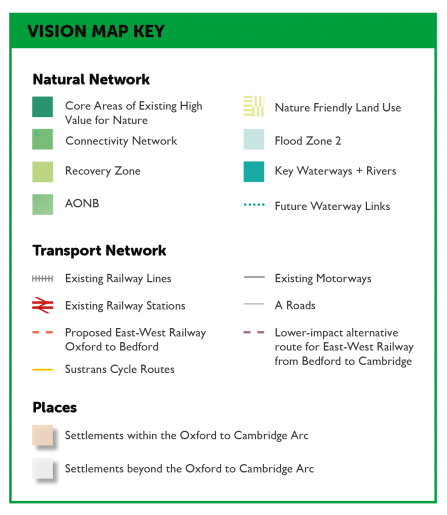
Living networks for wildlife
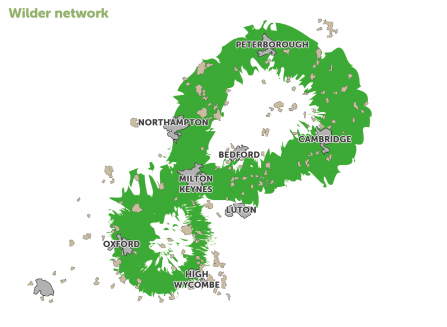
The wilder network is a big, bold plan to protect the wildest places, connect them together and increase the overall area available to wildlife, creating a living legacy for generations to come.
It is a pioneering vision to establish a network where nature can recover and wildlife can thrive.
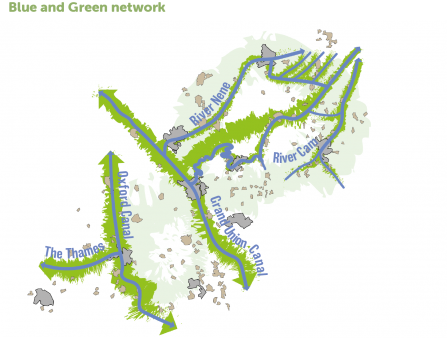
The natural blue and green network connects people to nature, encouraging people to move sustainably by providing access to settlements and wild areas along new and enhanced pedestrian, cycle and boating connections.
Natural corridors allow wildlife to move and migrate freely across the region, linking natural habitats along vibrant green corridors and restored blue waterways.
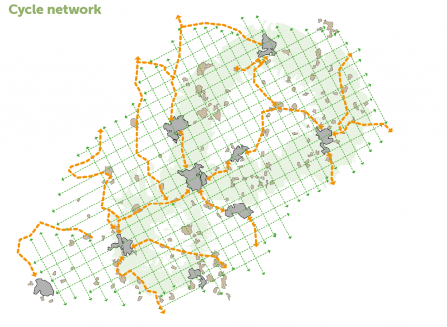
A concept for a better, more permeable cycle network, strengthening the existing national routes with a ‘green grid’ of new walking and cycling paths, allowing people to navigate the landscape and encouraging sustainable, slow movement.
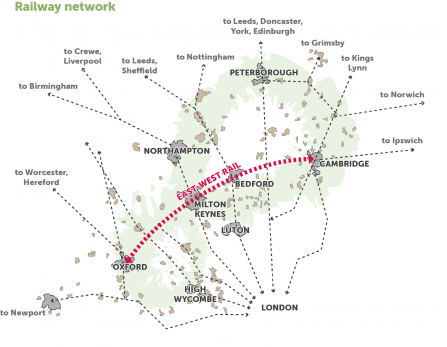
The east-west rail is a major opportunity to change the way people move across the region, as the railway network expands away from the London-centric model. Consideration of sustainable transport options will be important in informing the most sustainable locations for development.
The need for a new approach
The present crisis for nature in the UK
The hard truth
We are facing a nature and climate emergency. Habitat loss has unintended consequences. These include soil erosion, loss of pollination services, increased risk of flooding, and pollution of water courses. Once environmental degradation begins it is difficult to reverse. At the same time, cities and urban expansion place pressure on natural resources. The Southeast of the UK for example has extremely high levels of water stress.
The Intergovernmental Panel on Climate Change predicts that global temperatures will increase by 1.5°C by 2050 and will continue to cause longterm changes to the climate, resulting in sea-level rises and increasing the risks of drought, floods, and extreme heat. This will exacerbate the current environmental and biodiversity crises, and affect our way of life.
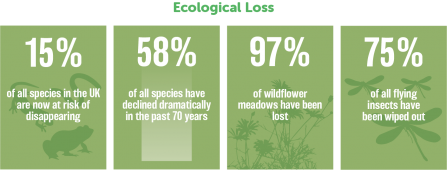
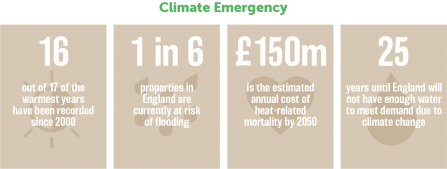
The need for housing
If we do not change the way in which we plan and deliver different types of housing and infrastructure, we will see an acceleration of species loss, with knock-on consequences for our own health, wellbeing and social and environmental sustainability.
If we continue to build in the same way, we will get the same results: increased congestion, pollution, and continued deterioration in quality of life. The economic cost of this will be felt from increased social care requirements to the impacts of flooding and a fall in agricultural productivity.
We can decide the future we want to create. We can redesign how we live and work. We can put nature first and reconnect with our wildlife. We can create communities that support healthy lifestyles. We can take advantage of innovation to create new ways of connecting and sustaining communities. By rediscovering the value of nature and enabling communities to reconnect with wildlife and each other, we can capture the full social and environmental value of this approach.
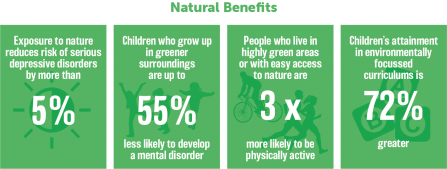
Our history of decline
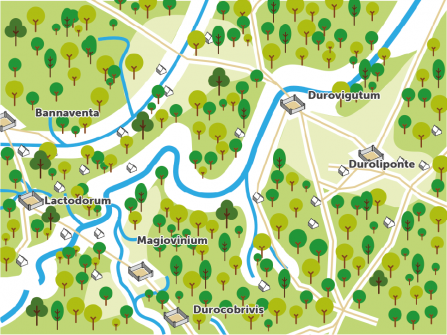
Roman era
Looking through historical records and mapping, it is evident that much of the UK’s natural woodland was lost by the end of the Roman era.
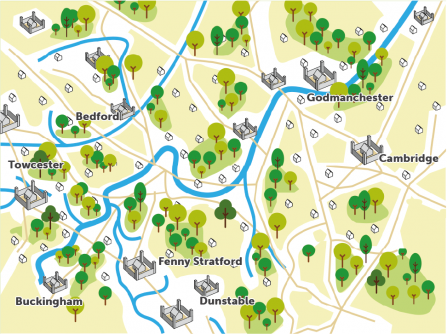
15th century
Settlements and farmland expanded through medieval times to the 15th century, further depleting woodland coverage. Agricultural land coverage has significantly altered the character of the UK’s landscape.
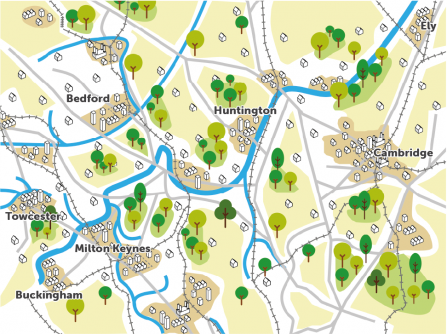
20th century
The urban and suburban expansion of places and infrastructure designed for the car. The way we have developed and managed our land has eroded and severed the natural environment, forcing nature to retreat into isolated pockets of landscape.
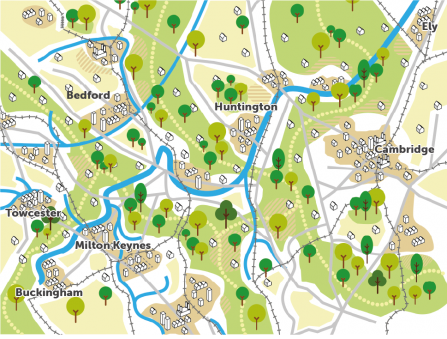
21st century vision
A pioneering and aspirational vision to restore the natural environment and wildlife in one of the most nature depleted regions in the UK. Creating a nature recovery network that stitches nature-rich areas together with a natural green mosaic that improves connections for wildlife and health and wellbeing for people. A 21st century solution we desperately need.
What does nature need?
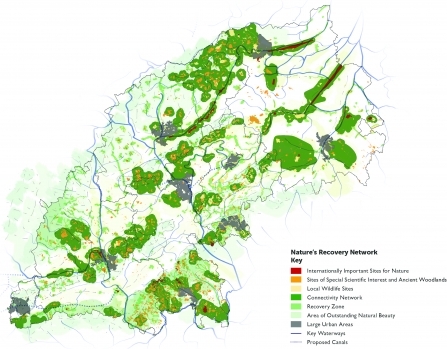
Nature's Recovery Network
A joined-up system of places important for wildlife. This is the ambitious network that eventually re-connects our fragmented nature.
The Connectivity Network and Recovery Zones on the map show opportunity areas where nature can most easily spread to newly created habitat. The aim is for a high proportion of land in this zone to contribute to Nature’s Recovery Network.
Outside the network must be nature friendly. All land use should include sustainable practices and features that provide habitat for wildlife.
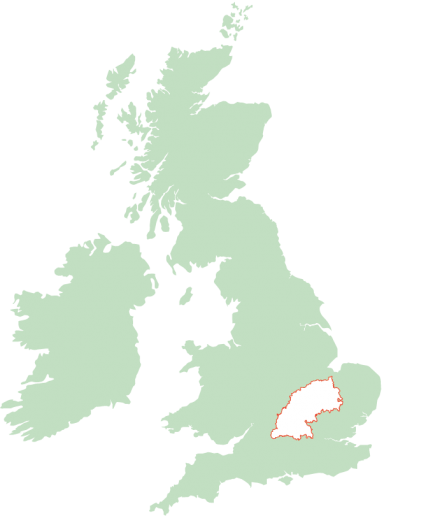
Location of the area covered by 100 Miles Wilder within the UK
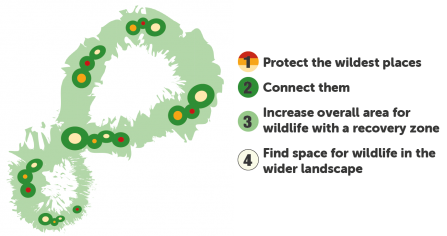
The concept
Adopt the 4 stage process to nature recovery: protect and enhance the most valuable habitats, connect these through corridors, create buffers around the emerging network and encourage these nature reservoirs to extend into the surrounding farmland and communities.
A landscape led approach
Taking a landscape-led approach means understanding and prioritising nature’s needs first.
Nature’s Recovery Network has been overlaid with the various geographical constraints and characters, to create a network that will holistically protect, connect and provide room for nature to recover.
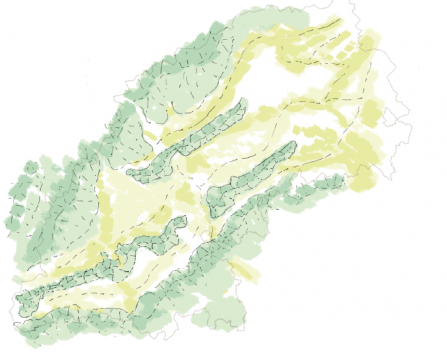
Ridges and valleys
The region’s geography is defined by ridges and valleys, structuring the area along corridors that run from the southwest to northeast.
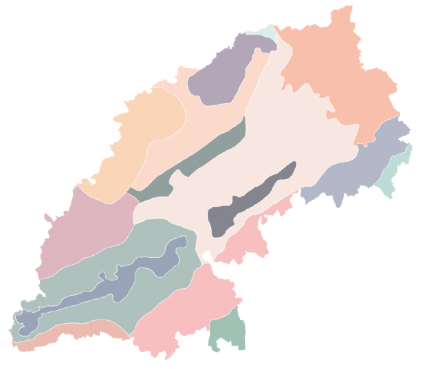
Landscape character
Interspersed with remnant forests, meadows, grasslands and fens, the region comprises various national landscape character areas that have largely been influenced by human activity and retain little of their original character.
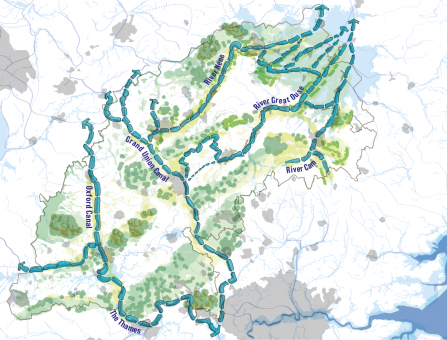
Water and flooding
Key waterways include the Thames, River Nene, River Great Ouse and River Cam. Flood mapping reveals the importance of the waterways and fenlands to the northeast of the region, which drain towards the Wash nature reserve on the east coast. Development in these areas could exacerbate flooding issues upstream, and negatively impact the water stress the region is already beginning to experience.
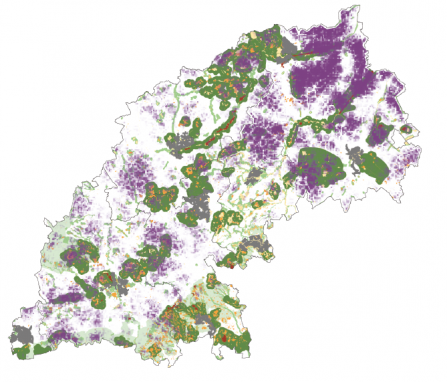
Most tranquil places
Tranquillity data reveals the most tranquil areas across the region, where one can appreciate dark skies at night and quiet retreat in the day.
Rethink movement across the region
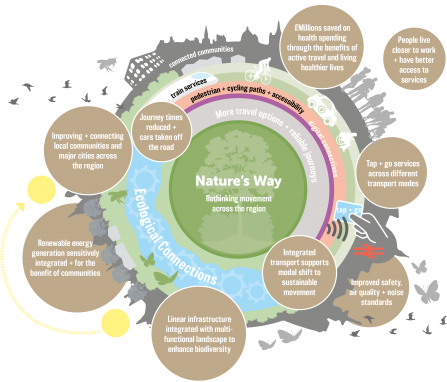
Rethinking movement across the region
Our vision includes rethinking the way in which we plan and design movement within the corridor so it is more joined up and takes advantage of the natural landscape. This means prioritising active travel and planning development that is easily accessible to local services.
We need to change how we plan for new infrastructure, shifting the conversation away from capacity and speed, to redefine the problem we are seeking to solve in the context of social and environmental needs.
Zero carbon living

Introduction
The UK government has a legally binding commitment to reduce carbon emissions to zero by 2050. Infrastructure investment in the OxCam Growth Corridor must pave the way by achieving the goal of Zero Carbon by 2030, well ahead of the national timeframe. An integrated, robust and consistent strategy will avoid the need and associated cost of remediating insufficient provision. The transition can be facilitated by smart, low carbon and integrated approaches to energy.

Renewable energy
Mega fact: 24% - contribution from energy supply to UK total carbon emissions (BEIS, 2017)
The falling cost of renewables and innovations in energy storage is enabling a shift towards decentralised energy generation. Local generation can also provide community benefits.

Decarbonised Transport
Mega fact: 27% - contribution from transport to UK total carbon emissions (BEIS, 2017)
The movement hierarchy needs to prioritise people through active travel and local service provisions. Communities can be supported by interconnected public and shared transport services designed to integrate with renewable energy sources.
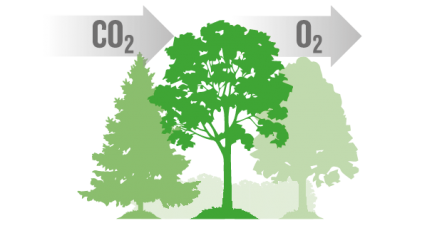
Carbon Removal
Mega fact: 35MtCO2e per year – removal potential through investment in natural assets across the UK (Royal Academy of Engineering, 2018)
In addition to emission reduction, removal of carbon from the atmosphere is essential to achieve net zero carbon emissions by 2030. Natural assets such as woodlands, habitats and well-managed soils capture carbon effectively.

New Passive Homes
Mega fact: 75% - reduction in heating demand compared to current building regulations standard of 60kWh/m2/yr (The Environmental Design Pocketbook, 2015, p339) (BEIS, 2017)
The Passive House Standard is an approach to designing out heating and cooling demand. Coupled with solar energy, this can deliver Zero Carbon homes.

Building Retrofit
Mega fact: 30-80% - emission reduction potential through low-carbon retrofit or refurbishment (Retrofit & Innovate UK,2014)
Some 80% of housing stock that will be needed by 2030 already exists. Retrofitting buildings with improved insulation is essential to achieve goals.
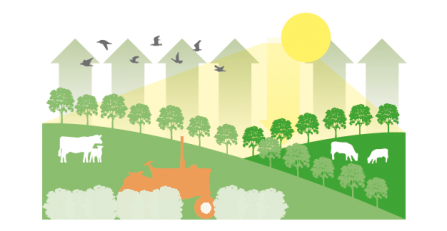
Sustainable Agriculture
Mega fact: 80% emissions reduction potential by 2030 with major land use changes and efficiency improvements (CTI, 2019)
Agricultural and farming practices are shifting so that they can preserve and restore critical habitats, improve soil health and reduce emissions.
How can we do this?

The big benefits
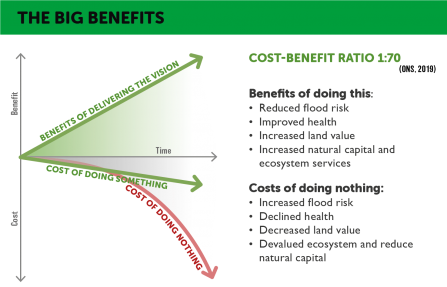
Principles for building nature's way

Planning for nature
It is essential to understand environmental capacity before planning and setting targets for development; all development in the Arc should be set within a single strategic plan informed by a strategic environmental assessment, full public consultation and independent examination.
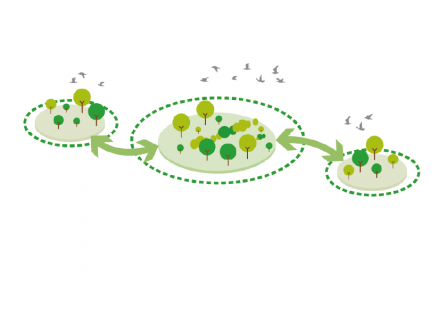
Nature centred design
Development should be designed from the outset with nature in mind, targeted at places where it can have a positive environmental impact and contribute to a Nature Recovery Network.
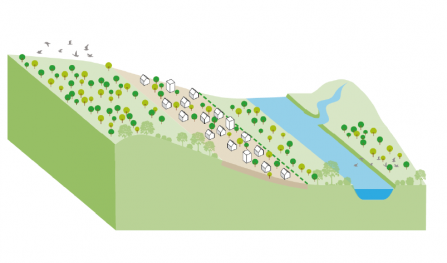
Build in the right places
Building in the right places goes beyond aligning strategic land for housing with transport infrastructure, it should preserve the wildest places and avoid impacting on precious core sites and floodzones. Never build on ancient or high-value habitat. Always ensure that nature’s corridors and networks are maintained.
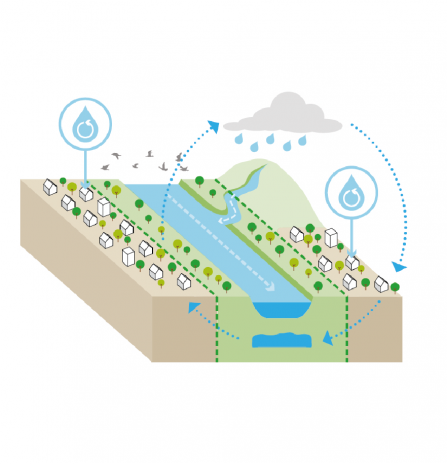
Restorative water management
It is vital that groundwater and aquifer restoration is prioritised in the region to ensure that water stress does not become more severe. This means increasing storage in the flood plain with natural habitats, and slowing rainfall with sustainable urban drainage and natural swales in new development areas.
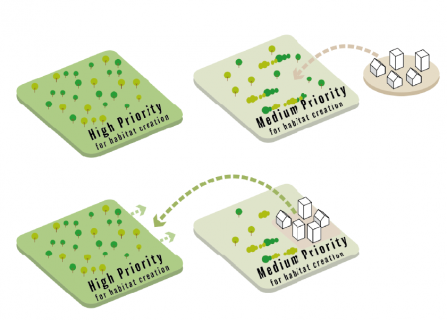
Giving back to nature
New development and settlements should give back to nature and deliver a net gain for wildlife. This could include funding through a Wildlife Infrastructure Levy or habitat creation schemes to capture carbon at a strategic level.
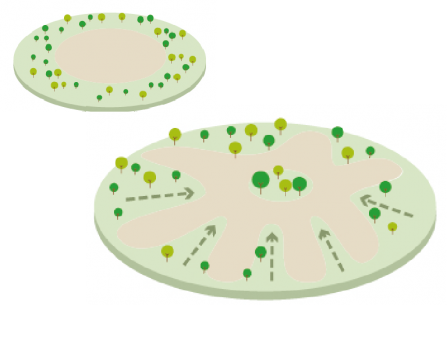
Natural space provision
Access to nature should be a human right. New places should interweave natural landscape with housing and movement networks in a way that draws nature in and gives everyone equal access to living landscapes. We recommend at least 50% of new development is comprised of natural green space.
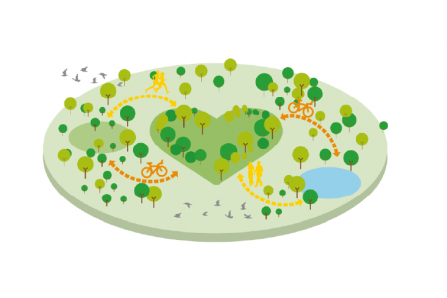
Right to access nature
The landscape should be considered a cultural asset. Everyone should have access to nature and leisure activities such as nature trails, walking and cycling.
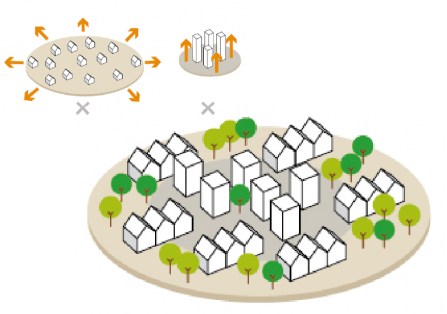
Compact is key
Getting the density right is about creating places that are compact, social and walkable. Well-designed compact places integrate natural intensity with efficient urbanism, creating strong communities and enhancing wellbeing.
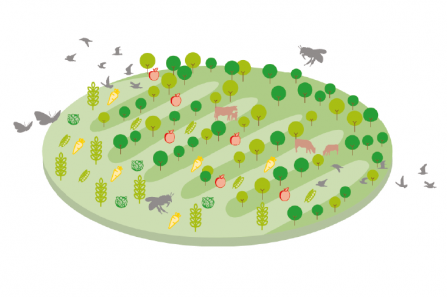
Nature friendly farming
The Arc contains large areas of nationally important farmland. Promote and support nature friendly agricultural practices that are better for wildlife, our health and our long-term economy. Enable people to make informed choices about local, seasonal, sustainably grown food.
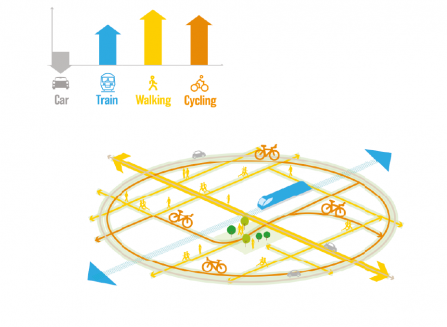
Active and aligned travel
Encourage people to move sustainably by providing interconnected and easy to use travel services. Slow movement networks that link up to decarbonised public transport will help people to shift their habits and make better everyday decisions about how they move.
The Nature's Arc partners (Beds, Cambs and Northants Wildlife Trust, The Royal Society of Wildlife Trusts, RSPB and The Woodland Trust) support the 100 Miles Wilder vision. They have produced this document which contains the principles behind the vision.

